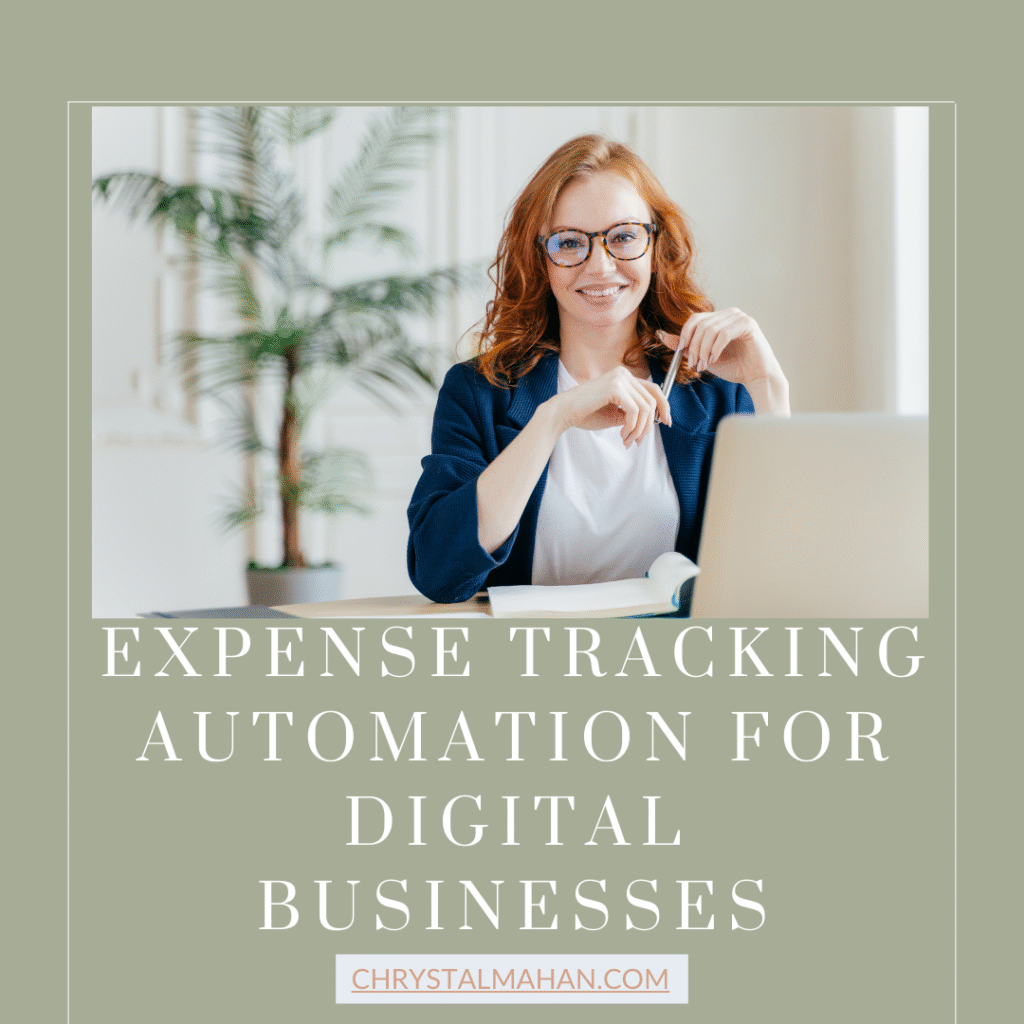Expense Tracking Automation for Digital Businesses

The founder stared at the mountain of receipts scattered across her desk, each one representing a business expense that needed to be categorized, entered, and reconciled. What started as a simple digital marketing agency had grown into a thriving business, but the manual expense tracking process was consuming hours that could have been spent serving clients or developing new services. Sound familiar?
This scenario plays out in countless digital businesses every day. A successful e-commerce entrepreneur discovered that he was spending 15 hours per month manually entering expense data, time that could have generated thousands in additional revenue. The breakthrough came when he implemented automated expense tracking systems that reduced this tedious task to just 2 hours monthly while improving accuracy by 95%. His business not only saved time but gained crystal-clear financial visibility that enabled smarter decision-making.
If you’re ready to transform your digital business from a time-consuming expense tracking nightmare into a streamlined, automated financial powerhouse, you’re in the right place. The tools and strategies outlined in this guide will help you reclaim your time, reduce errors, and gain the financial insights needed to scale your business effectively.
Why Digital Businesses Need Automated Expense Management
Digital businesses face unique expense tracking challenges that traditional brick-and-mortar companies rarely encounter. Software subscriptions, domain renewals, digital advertising spend, and cloud storage costs create a complex web of recurring and variable expenses that can quickly spiral out of control without proper automation. Unlike physical businesses with predictable overhead costs, digital enterprises often deal with dozens of micro-transactions across multiple platforms and currencies.
The traditional approach of manual expense entry simply doesn’t scale with the rapid growth typical of digital businesses. As your business expands across different markets, adds new software tools, or increases advertising spend, the volume of transactions grows exponentially. Manual tracking becomes not just time-consuming but also error-prone, leading to inaccurate financial reporting and potential compliance issues. These errors can have serious consequences, from overpaying taxes to missing deductible expenses that could save thousands of dollars.
Modern expense tracking automation addresses these challenges by connecting directly to your business accounts, automatically categorizing transactions, and providing real-time financial insights. This technology eliminates the human error factor while ensuring that every business expense is captured and properly classified. The result is a financial management system that grows with your business rather than becoming a bottleneck that limits your expansion.
Essential Features of Automated Expense Tracking Systems
The most effective automated expense tracking systems for digital businesses include bank and credit card integration that automatically imports transactions in real-time. This feature eliminates the need for manual data entry while ensuring that no expenses slip through the cracks. Look for systems that can connect to multiple financial institutions and handle various currencies, which is particularly important for digital businesses that operate globally or purchase services from international providers.
Intelligent categorization represents another crucial feature that sets advanced systems apart from basic accounting software. Machine learning algorithms analyze transaction descriptions, merchant information, and historical patterns to automatically assign expenses to the correct categories. This capability becomes increasingly accurate over time as the system learns your business patterns. The best systems also allow for custom categories specific to digital business needs, such as software subscriptions, digital marketing, and online course platforms.
Receipt capture and storage functionality transforms the often chaotic process of managing physical and digital receipts into an organized, searchable database. Mobile apps enable instant receipt capture through smartphone cameras, while email forwarding features automatically extract receipts from confirmation emails. Advanced optical character recognition technology extracts key information from receipts, including vendor names, amounts, and dates, then matches this data with corresponding bank transactions for complete expense records.
Streamlining Recurring Subscription Management
Digital businesses typically rely on numerous software subscriptions, from email marketing platforms to project management tools, each with different billing cycles and pricing structures. Automated expense tracking systems excel at identifying and managing these recurring expenses, providing visibility into subscription costs that might otherwise go unnoticed. This feature helps prevent the common problem of forgotten subscriptions that continue charging your business account long after their usefulness has ended.
Subscription tracking capabilities include automatic recognition of recurring billing patterns, alerts for upcoming renewals, and detailed analytics showing subscription cost trends over time. These insights enable better budgeting decisions and help identify opportunities for cost optimization. For instance, you might discover that you’re paying for multiple tools that provide similar functionality, or that annual payments would save money compared to monthly billing cycles.
The ability to set up automated alerts for subscription renewals ensures that you never miss an opportunity to evaluate whether a service still provides value to your business. Some systems even integrate with subscription management platforms to provide a centralized dashboard showing all recurring expenses, their renewal dates, and their impact on your monthly cash flow. This level of visibility is essential for maintaining healthy profit margins as your digital business scales.
Integration with Popular Digital Business Tools
Modern expense tracking automation systems understand that digital businesses operate within ecosystems of interconnected tools and platforms. The most valuable systems offer seamless integration with popular e-commerce platforms, payment processors, and digital marketing tools. These integrations automatically capture expense data from sources like Amazon Business accounts, Google Ads spending, Facebook advertising costs, and various software-as-a-service platforms.
E-commerce businesses benefit significantly from integrations that automatically track cost of goods sold, shipping expenses, and marketplace fees. When your expense tracking system connects directly to platforms like Shopify, Amazon Seller Central, or Etsy, it can automatically categorize these business-critical expenses without manual intervention. This integration provides accurate gross margin calculations and helps identify the true profitability of different product lines or sales channels.
Digital marketing integrations prove particularly valuable for businesses that invest heavily in online advertising and marketing automation tools. Direct connections to Google Ads, Facebook Business Manager, email marketing platforms, and affiliate networks ensure that all marketing expenses are automatically tracked and properly attributed. This data becomes invaluable for calculating customer acquisition costs and return on advertising spend, metrics that are crucial for scaling digital marketing efforts profitably.
Maximizing Tax Benefits Through Accurate Expense Classification
Proper expense classification becomes significantly easier with automated systems that understand the nuances of digital business tax deductions. These systems can automatically identify and categorize common digital business expenses such as software subscriptions, domain registrations, web hosting, and digital advertising spend. This accuracy is crucial because different expense categories may have different tax implications, from immediate deductions to depreciation schedules.
The automation aspect is particularly valuable during tax season when having well-organized, properly categorized expenses can save hours of preparation time and ensure that no deductible expenses are overlooked. Many digital businesses miss significant tax savings simply because they fail to properly track and categorize smaller expenses like stock photo purchases, font licenses, or plugin subscriptions. Automated systems capture these micro-transactions and ensure they’re properly classified for maximum tax benefits.
Advanced expense tracking systems also generate detailed reports that tax professionals can use directly, reducing the back-and-forth communication typically required during tax preparation. These reports can break down expenses by category, time period, or project, providing the granular detail needed for accurate tax filing. Some systems even integrate directly with popular tax preparation software, further streamlining the entire process from expense capture to tax filing.
Building Financial Intelligence for Strategic Growth
Automated expense tracking systems transform raw financial data into actionable business intelligence that supports strategic decision-making. Real-time dashboards provide immediate visibility into spending patterns, budget variances, and cash flow trends. This information enables digital business owners to make informed decisions about resource allocation, investment priorities, and cost optimization opportunities.
The analytical capabilities of modern systems go beyond simple expense categorization to provide insights into business performance metrics. For example, you can track the relationship between marketing spend and revenue generation, identify seasonal spending patterns, or analyze the profitability of different business segments. These insights become increasingly valuable as your business grows and faces more complex financial decisions.
Predictive analytics features help forecast future expenses based on historical patterns and business growth projections. This capability is particularly useful for digital businesses with variable costs tied to business volume, such as payment processing fees, cloud storage costs, or customer support software pricing. By understanding how expenses scale with business growth, you can better plan for future cash flow needs and make more informed pricing and investment decisions.
Taking Control of Your Financial Future
The transformation from manual expense tracking chaos to automated financial clarity doesn’t happen overnight, but the journey begins with a single step. Digital businesses that embrace expense tracking automation consistently report not just time savings, but improved financial decision-making that directly impacts their bottom line. The visibility and control that these systems provide become the foundation for sustainable growth and long-term success.
The technology exists today to eliminate the tedious, error-prone aspects of expense management while providing the financial insights needed to scale your digital business effectively. The question isn’t whether you can afford to implement automated expense tracking, but rather whether you can afford to continue operating without it. Every day spent on manual expense entry is a day not spent growing your business, serving customers, or developing new revenue streams.
Ready to dive deeper into digital business optimization strategies? Explore our other posts for more insights on streamlining operations and maximizing profitability. Better yet, let’s discuss your specific expense tracking challenges over coffee. I’d love to hear about your business and share personalized strategies that could transform your financial management approach.






